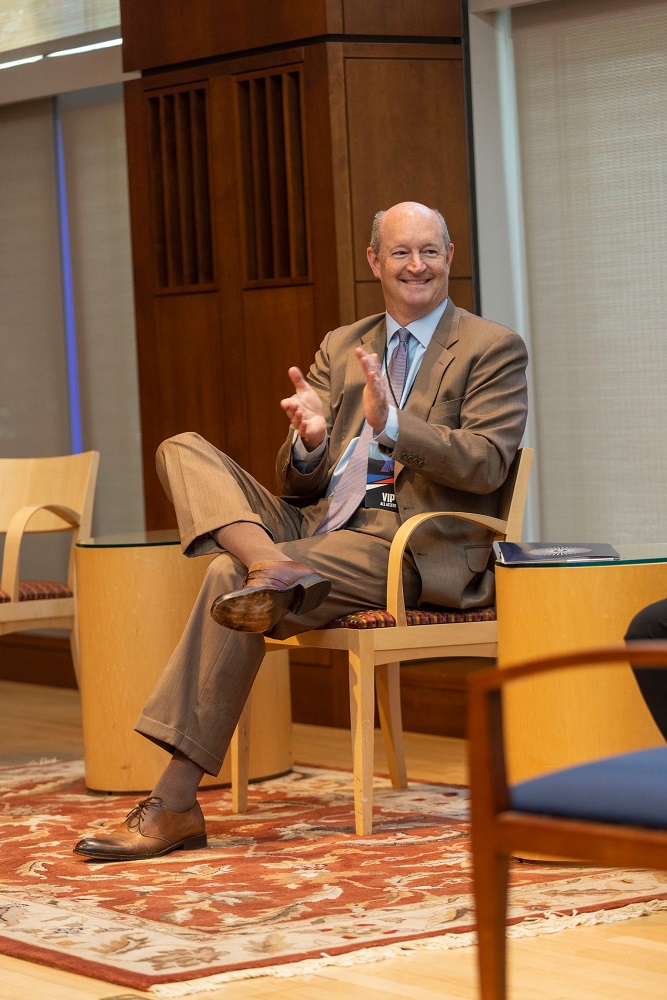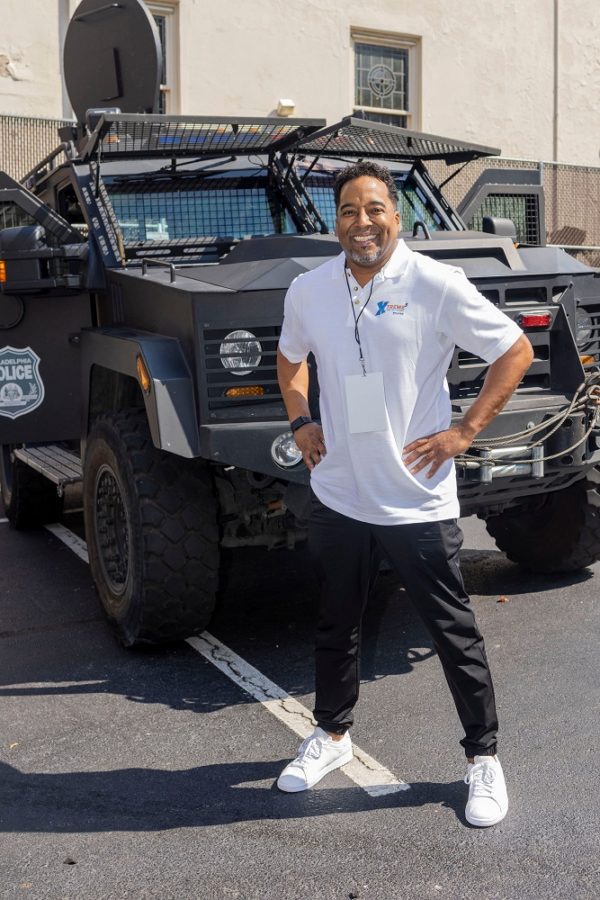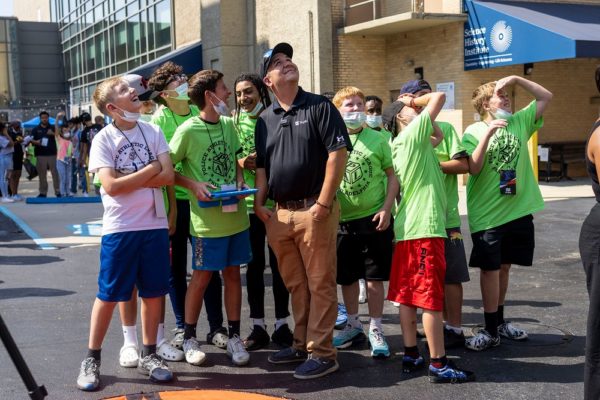The students were anxiously waiting for their turn to fly the drone as part of the Xtreme5 Teen Tech Summit powered by Grace3 Technologies and hosted by the Science History Institute.
The summit gave kids the opportunity to try VR headsets, use drone technology, take a tour of mobile command centers and explore the exhibits at the science history museum.
David Cole, president and CEO of the Science History Institute, said the goal was to get kids interested in science through storytelling. He said he also wanted the kids to see that scientists are not just the stereotypical older white men in lab coats. During his opening remarks, Cole told the story of Dr. Percy Julian, a Black scientist who helped make hydrocortisone a household name.
“One of our goals is also to give them experiences today where they understand that everybody, every type of person, has been and could be a scientist,” he told Technical.ly.
Along with the STEM education work, Cole said another goal of the museum is to add to the stories, artifacts and papers of many prominent Black American scientists. He said he wants the Science History Institute to become an institution that’s known for housing and interpreting the legacies and work of Black American scientists and technologists.

Kids at the X5 Teen Tech Summit had the chance to try VR headsets. (Courtesy photo)
The kids also attended a session during the summit about STEM careers. Cole said that there are tons of jobs in STEM fields, but some kids don’t see themselves filling those roles unless they see or hear stories about people like them doing it. As the classic refrain goes: “You can’t be what you can’t see” — and Black professionals make up just 11% of the STEM workforce.
“If you can tell them stories and show them examples of people who look like them, sound like them, where in a sense you can model that behavior,” Cole said, “you stand a much better chance of recruiting those kids into both studying these fields and then eventually taking careers in them.”

David Cole. (Courtesy photo)
He said he hoped the students take away at least one thing from the summit that inspires them to think: “I could do that.”
The students Technical.ly spoke to said they came because they have some type of interest in science or technology. (Several said they just wanted to fly a drone.) Many of those in attendance were with the Police Athletic League (PAL) recreational youth program and most were middle schoolers.
“The scientific literature tells us that that’s an age when if you catch young people, they’re old enough, typically, to be thinking about the direction they want their learning to take, particularly with caregivers, school counselors, teachers, whatever,” Cole said, “but still young enough that if you steer them in an interesting direction like this, they can still make a lot out of that.”
One seventh grader said he liked science because there are a lot of things you could do with it. He said he plays football, and one day would like to use science to help athletes.
Another seventh grader said he was interested in electronics. He said it was fun to play video games and play with drones. One day, he wants to make video games.
Grace3 Technologies, a Black-owned telecommunications company, hosts tech education programming all over the country, but this is the first time partnering with the Science History Institute.
“I wanted to be a part of them because the resources are amazing, and this was just a different experience for the kids,” said John Henry, CEO and chairman of Grace3 Technologies. He added that 20% of the company’s profits go toward STEM activities and exposing kids to technology.

John Henry, CEO and Chairman of Grace3 Technologies. (Courtesy photo)
When Henry was a kid, he took more away from experiences outside of sitting in a classroom, and said he would have rather talked to a CEO than sit behind a desk and learn about a business.
The cool factor of drones doesn’t hurt.
“The hands-on experiences are those that last, and when you have a drone in your hand, it’s much like a video game,” Henry said. “This is sort of the vehicle from which we’re using to inspire, expose, and hopefully sort of empower these kids to do their thing and technology.”
Henry said his hope for the younger kids is that they continue to engage and participate in STEM activities. For the older kids, he hopes that they are inspired by this exposure and see potential opportunities for the future and that they see that they have the ability to “participate in a digital economy.”
And for everyone, he just hopes they had fun.
Sarah Huffman is a 2022-2024 corps member for Report for America, an initiative of The Groundtruth Project that pairs young journalists with local newsrooms. This position is supported by the Lenfest Institute for Journalism.Before you go...
Please consider supporting Technical.ly to keep our independent journalism strong. Unlike most business-focused media outlets, we don’t have a paywall. Instead, we count on your personal and organizational support.
3 ways to support our work:- Contribute to the Journalism Fund. Charitable giving ensures our information remains free and accessible for residents to discover workforce programs and entrepreneurship pathways. This includes philanthropic grants and individual tax-deductible donations from readers like you.
- Use our Preferred Partners. Our directory of vetted providers offers high-quality recommendations for services our readers need, and each referral supports our journalism.
- Use our services. If you need entrepreneurs and tech leaders to buy your services, are seeking technologists to hire or want more professionals to know about your ecosystem, Technical.ly has the biggest and most engaged audience in the mid-Atlantic. We help companies tell their stories and answer big questions to meet and serve our community.
Join our growing Slack community
Join 5,000 tech professionals and entrepreneurs in our community Slack today!

The person charged in the UnitedHealthcare CEO shooting had a ton of tech connections

From rejection to innovation: How I built a tool to beat AI hiring algorithms at their own game

Where are the country’s most vibrant tech and startup communities?



